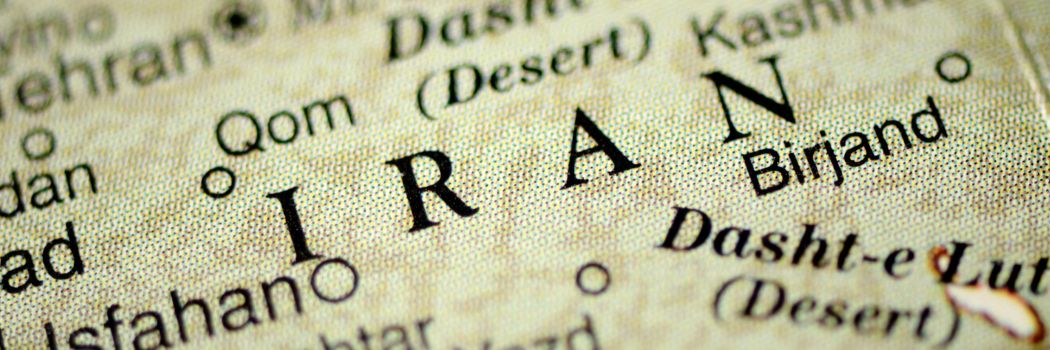Examining the protests in Iran

Iran has seen weeks of anti-government protests which began following the death of Mahsa Amini in mid-September, days after her arrest for allegedly not complying with the country’s strict rules on head coverings. Professor Anoush Ehteshami, the Nasser al-Mohammad al-Sabah Chair in International Relations, in Durham University’s School of Government and International Affairs, examines the current wave of protests.
Q: Are the protests we’ve witnessed in recent weeks different to past demonstrations against Iran’s government?
A: We're seeing a qualitative change in the protests that can be defined in terms of their size, magnitude and geographical diversity that is now encompassing 80 plus cities and goes beyond urban centres into rural areas, which were always assumed to be the natural base of the regime.
The profile of the demonstrations is also changing and you’ve now got not just young people, who've been at the forefront of protests for some time, but primary and secondary school children protesting in school.
Women are also at the forefront, which is very significant given that it was the death of a young Kurdish woman that set off this latest round of protests.
Demonstrations are also spreading across Iran's different ethnic communities, its Kurdish populations, its Arab populations, in Sistan and Baluchestan where there are people of Pakistani or South Asian origin, and amongst Sunni Muslims, which is very important, not the Shia faith which is Iran’s main denomination of Islam.
The demonstrations are now much more daring and do not seem to be held by threat or even use of violence against them.
Q: Are we seeing a profound social and political shift in attitude towards the Islamic Republic and its legitimacy?
A: When the Iranian Revolution took place in 1979, about a quarter of Iran's population was under 35 out of about 35 million people. Now about 65 per cent of the population of 85 million is under 35.
Virtually all of the demonstrators now have only known one political system, which is the Islamic Republic, and that has very serious issues regarding legitimacy. How can the regime claim to be legitimate when its own children are now negating it and are protesting against it?
As with past protests, and now the current demonstrations, there is this long pattern of clamour for openness, democracy and liberty irrespective of the regime type, political order or generational change. And that struggle is continuing to this day against the revolutionary state itself.
You could also argue that this is different because now the slogans are much more confrontational. They're not talking about an alternative - yet. But they're talking about liberty, about the freedom to choose what I wear as a woman, about freedom of expression and association, about an end to police control, and the lifting of cultural restrictions and this is new.
This is significant because it does then raise questions about the legitimacy of the regime that claims to be God's polity on Earth.
Also, in the absence of leadership or a vanguard party, it is in a sense ‘cry freedom’ by citizens who have given up on the regime providing for their economic well-being, for access to the rest of the world, and for opportunity that is being deprived.
Q: Iran is affected by international financial sanctions. What part is this playing in what we are seeing?
A: Inflation is over 50 per cent, the currency has collapsed, so anything that comes from overseas has got a massive inflationary price tag attached to it, sanctions deprive the country of things that most of us take for granted.
This is one side, that there is impoverishment of the middle classes who are leading these challenges. This is balanced against absence of hope that the regime is usurping what remains of resources and that there is no opportunity for jobs, for betterment, not just for me, but for my children and grandchildren.
The other side is the political crisis, that the society doesn't see their political masters responding or being able to respond to their legitimate needs and requirements – to serve the country and to serve the people
Q: How, ultimately, do you see the situation in Iran being resolved?
A: The population needs to be assured that their political leaders are on their side and not against them.
The political leaders need to show a degree of goodwill and they can start by not shooting to kill demonstrators. They can start by accepting and tolerating and recognising people's lack of access, lack of jobs and opportunity. Then further they can begin to formulate a response that says we recognise your fear and concerns, we hear you and this is how we're going to deal with it.
Whether those amongst the politicians who are preaching compromise and dialogue will get the upper hand remains an open question. Ultimately the regime may manage to put down this cycle of violence.
But what we're seeing is that these protests are now much more frequent. The last time was 2009, then 2019, this time it's 2022. What that tells you is that the cycle of protests is getting shorter, which means that the crisis is getting deeper.
The message is clear that until the leaders get the country out of this hole, they are not going to be able to quell protests.
Find out more
-
Discover more about the research of Professor Anoush Ehteshami.
-
SGIA is a research-intensive department and uses innovative teaching techniques to ensure it combines its latest world-leading research into the programmes it delivers. Visit our SGIA webpages to find out more about studying with us.


/prod01/prodbucket01/media/durham-university/campaign-sites/general-election-2024-hub/Election-Banner-1920X640.jpg)